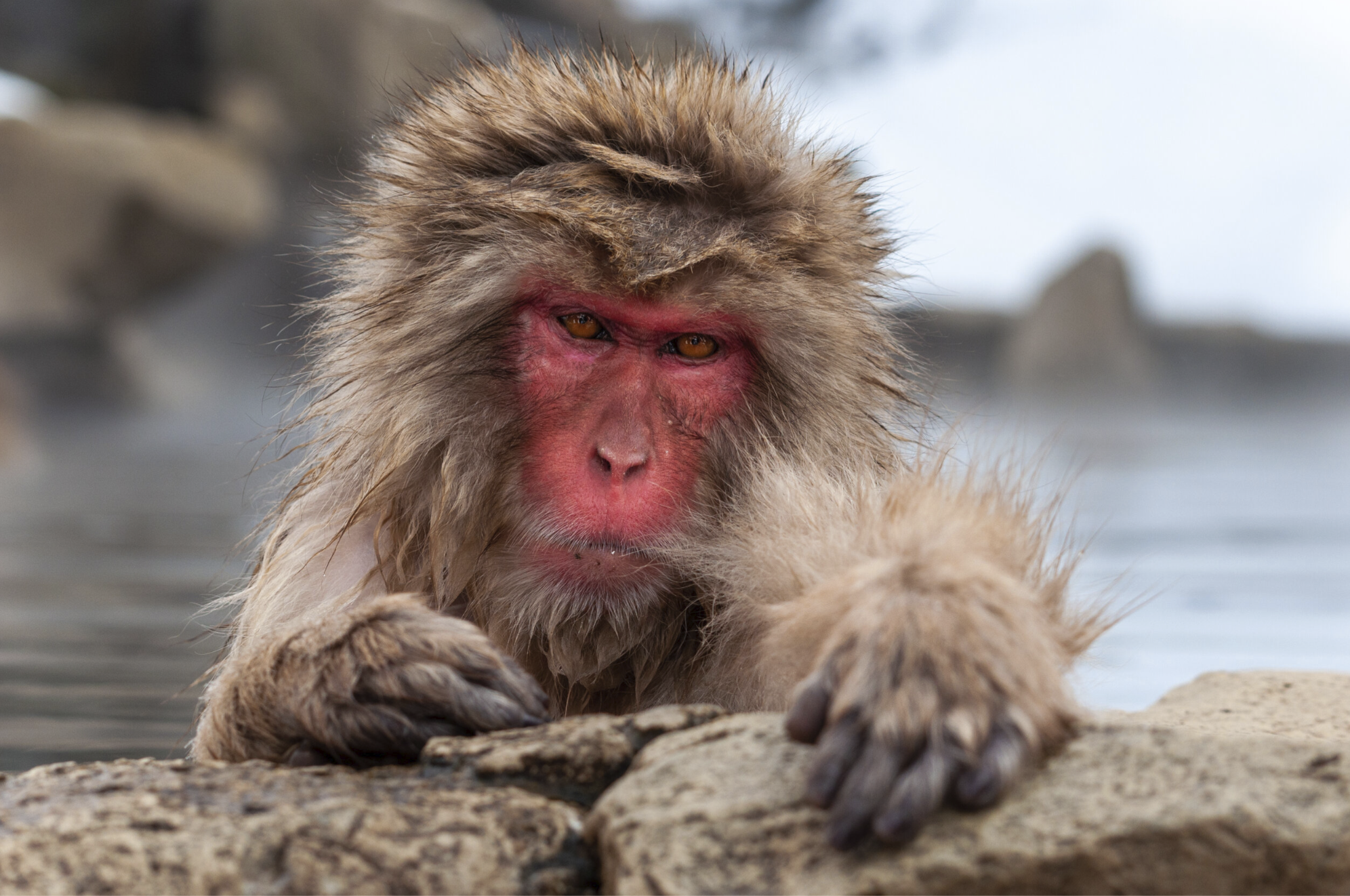The Origin of Fishing Behaviour: A History of Primate Aquatic Traditions
By Alex Chege, Safina Center Junior Fellow
Read Part 1: How we became fisherman: An exploration of the evidence so far.
A Japanese Macaque (Macaca fuscata) warms up in hot springs at Jigokudani, Japan. Photo courtesy of wildlife photographer ©Moana Ghiandoni.
Humans (Homo sapiens) are not the only species of primate known to frequently interact with aquatic and marine environments. In fact, more than 30 species of primates (monkeys and apes) have been observed using water and exploiting its resources in a myriad of creative ways. From Japanese macaques which bathe in wintery thermal springs, and Vervet monkeys that enjoy a swim to keep cool, to algae-scooping Chimpanzees and free-diving Long-tailed macaques with the more than occasional taste for crab. Or the less frequent but more sensational photograph of a spearfishing Orangutan that surfaces on our news feed. Though fewer than 10% of primates have been shown to interact with water, increasingly detailed reports are expanding these from mere anecdotal occurrences to evidence of more persistent use. Suggesting that these behaviours constitute primate aquatic traditions.
My previous blog post highlighted that the search for food is the selective force that drives humans towards aquatic resources, and our closest relatives are no different. Currently, 26 species of primates have been reported to feed on aquatic and marine flora or fauna. This list includes, Bonobos, baboons, capuchins, chimpanzees, and macaques all exploiting varied aquatic diets ranging from fish and algae to fiddler crabs and sometimes even shark eggs.
Primates have intuitive ways of balancing nutritional requirements, and to achieve this they adjust their behaviour accordingly. Across many species, this leads to varied and sometimes strange palates with the goal of balancing salts and ingesting essential minerals. Sodium is so essential for primates that some monkeys, such as Japanese Macaques, have even been observed preferentially washing sweet potatoes in sea water over fresh water to add sodium to their meals.
Accessing proteins and minerals is more important for some groups compared to others. For juveniles, a healthy diet does have lifetime consequences for growth and overall health, and the same is extended even earlier in life for pregnant or lactating females with newborns. Iodine, for example, is an essential mineral that promotes brain development and is abundant in many aquatic herbs, making them a regularly sought-after food item for adult female Bonobos in the Congo basin.
For the seven primate species which feed on aquatic crabs, this behaviour appears to be more commonly associated with females, juveniles, and infants. Scientists suggest that these groups benefit most from the protein, sodium, calcium and phosphorous abundant in these foods, highlighting the importance of these diets for nutritional needs and physical development.

